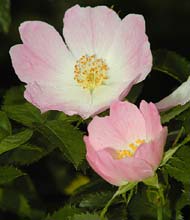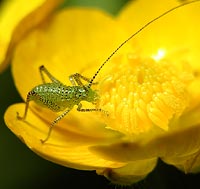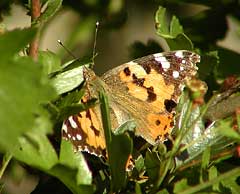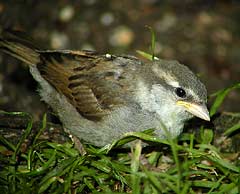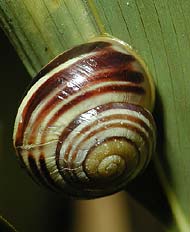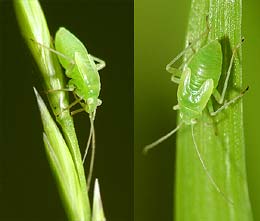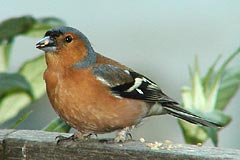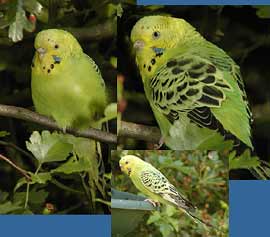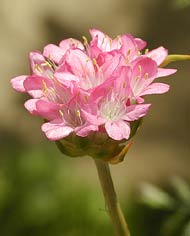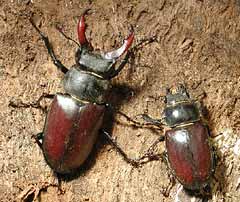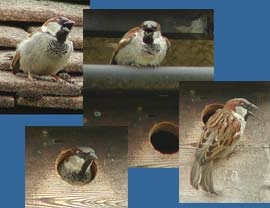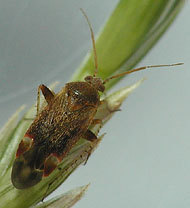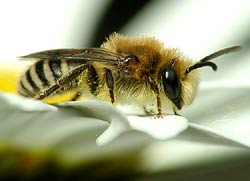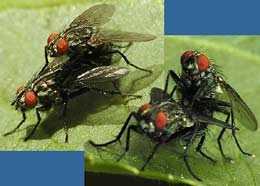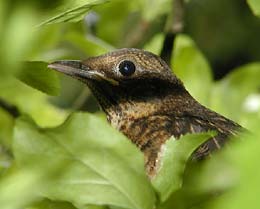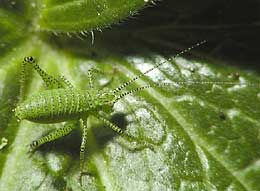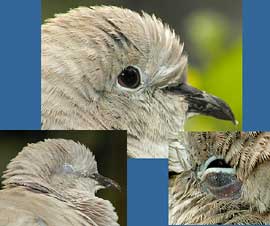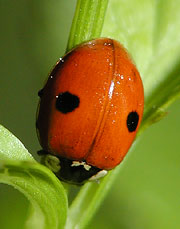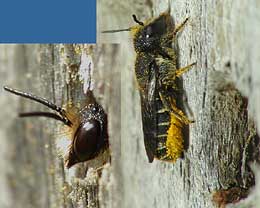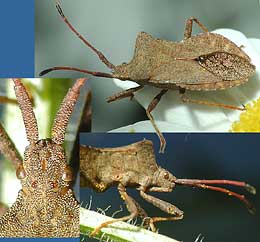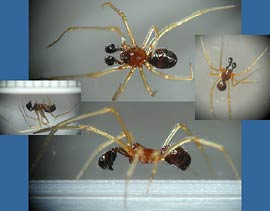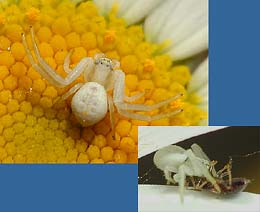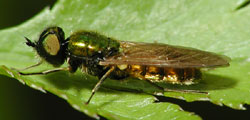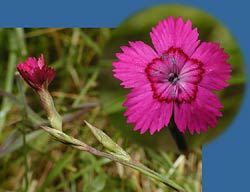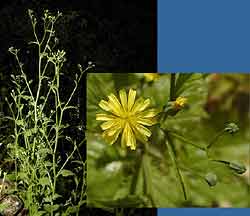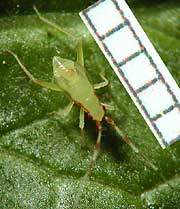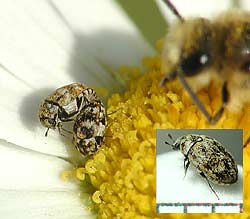Go to latest entry.....................................Go to previous entry1 June - Today has seen the temperature drop back down below 20C as clouds covered the sky and there were occasional showers - a Typically brief British heatwave has come to an end. Behind the big pond is a rose bush that was in the garden before we arrived in 1975. The flowers on it were not the prettiest, so I encouraged the root stock 'take over'. These days we have a display of these simple roses which I much prefer, and they have been opening this weekend.
I know it's another cricket picture, but I have included it for two reasons. Firstly, this is one of several I have found in a new cluster next to the big pond on a clump of field buttercups. Previously I have only found them near or on the Geraniums (11 crickets there at the last count). Secondly, This cricket is busy eating anthers (or pollen), just like the one photographed two days ago.
Tonight there was a solitary hedgehog in the garden at around 10.30pm. I forgot to mention that on Friday night (30May) there was a pair going in courtship circles under the Hawthorn.
2 June - A dry day with some sunshine, and which was a couple of degrees warmer than yesterday (max 22C).
Its ragged wing edges suggest that this butterfly has been doing a lot of flying. My guide books say that these butterflies do not survive the winter as adults anywhere but the south of Europe, or Africa. They migrate north between May and June. I wonder where this one came from.
Here a juvenile House Sparrow is feeding below the Hawthorn, having past the stage when it chased its parents to be fed. This is a sight I hope we see more of during the next couple of weeks. I only saw a parent feed a fledgling twice today.
I have seen few snails and slugs in the garden so far this year. Over the weekend several snails like this one have appeared on the big bamboo plant by my shed. They were not active in the daytime, and like this one, were completely withdrawn into their shells. They are White-lipped snails (Cepaea hortensis).
Back on the bird front, The Dunnock with an injury that I photographed back on 17 May is still a regular visitor to the garden. The effect of its injury is obvious when it moves around on the ground, as the right leg is held at a slightly splayed angle. Nevertheless it still moves about easily and flying seems unaffected. At 10.10pm there is a hedgehog eating chopped peanuts under the Hawthorn and I can hear another one at the bottom of the garden.
It has been a quiet day in the garden, and the only 'different' animal spotted was this bug nymph on grass. In the left-hand image you can see the characteristic piercing rostrum stowed away under the body. I cannot be sure, but its general shape and colour suggests that it could be a leaf bug.
Both of these birds are often about but have, up to now, avoided the feeders for some reason.
The Robins and Blackbirds continue to take mealworms away and there are a few more Starling and Sparrow fledglings begging for food. There is at least one Blue Tit taking mealworms from the feeder so there may still be a BT family somewhere nearby.
It arrived in the Hawthorn and was soon tucking in at the feeder. Then with with everything from Sparrows to Wood Pigeons coming and going, the budgie spent over an hour perched in the Hawthorn, occasionally preening and chirping, but otherwise just resting. After another feed around 7pm it disappeared towards the bottom of the garden. I wonder if it will re-appear tomorrow. This is only the second time we have seen an 'escapee' in the garden since 1975.
The first of our Thrift plants came into flower today, nearly three weeks later than last year.
They were not found in the garden. My son had to remove an old, dead Oak tree and found a numerous adults and larvae. he left as much of the rotten wood as he could in the ground, along with the insects, but he brought a few adults home for me to see. The last time he did that he was a cub scout! A few pieces of the Oak are now buried in the ground at the bottom of my garden, although I'm sure that there are no larvae in that timber. Last night again I could hear the sounds of hedgehog courtship somewhere in the undergrowth. While I was outside at around 9.15pm I watched bats flying over, the first time I've done that for many years. Before I forget again, on 19 August last year I photographed a solitary wasp busy digging into the log in the pond. Yesterday I noticed that the seal on the burrow entrance had been opened, although I didn't see any sign of activity there.
As I got a ladder ready this male Sparrow brought an end to my efforts as he displayed and called loudly above and at the boxes.
He wasn't successful in attracting a female, but his enthusiasm was enough to convince me to put the ladder and tower away until another day! The weather turned wet soon afterwards but despite this he repeated his performance several times during the rest of the day. I don't know whether he was successful in attracting a partner. The Budgerigar didn't appear today - I hope it found somewhere to shelter from the rain and the lower temperatures (max 15C). The Blackbirds, Blue Tits and Sparrows all continue to take away mealworms. They had a certain amount of competition from the frogs, which intimidated the smaller birds, especially the Sparrows. There was one amusing incident when a Dunnock landed on a small log and a frog leapt up and tried to catch it - a case of anything that move must be food, even if it's bigger than you! As I finish this entry at 10pm there is a hedgehog busy munching some chopped peanuts on the grass just outside the house.
Another picture of one of the small bees frequenting the Oxeye daisies. They seem to have the monopoly of the daisies at the moment, other than the occasional small hoverfly.
The morning sunshine highlighted these two flies as they mated on an Elder leaf. I haven't identified them, but an interesting feature to note is that the feet of the male seem to be larger and lighter than those of its partner (appearing almost white in the right hand image). The usual customers are taking mealworms away with continued enthusiasm. I spent a short time throwing mealworms to the birds. While the male Blackbird took the majority, it was the Sparrows that were the main 'snatch and grabbers', with the Robin taking the odd one or two.
It took some time before I spotted this Blackbird fledgling just a couple of feet away from it, keeping absolutely still in the shadows. I'm not sure if it was this that was upsetting the Robin, but there was no sign of anything else. The male Sparrow continues to spend periods calling from near the nestboxes, but I haven't seen any females go there as yet.
This is one of the original group that I first saw on 10 May. They now measure between 5-6mm in length as opposed to the 3mm a month ago. I spotted a cricket on the Burberris bush today, and another feeding on a buttercup flower by the pond, something that I se most days at the moment.
Although I didn't mention it, the dove first came to our attention yesterday, being very lethargic and being chased off by other doves. It was back today and spent ages just resting on the bird table or on the ground. At one stage, as I sat reading a newspaper on our Verandah it walked past and headed into the house! I was a bit stuck - if I followed, it would probably panic, so it was a case of tempting it back out with chopped peanuts.
It decided to rest and have short naps very close to me , not minding as I got my camera to take these images. It was interesting to see that as it closed its eyes, it is the lower eyelid that comes up. It remained in the garden for several hours, going for short walks followed by longer rests. When, finally, it disappeared, neither of us saw it go and I went round the garden checking everywhere just in case it had retired to a hidden corner somewhere - not found. We wonder how old it is - will we see it again tomorrow?
13 June - The Dove was here for most of yesterday. It's breathing was heavy and it had a lot of mucus around its beak. It spent a lot of time in the sunshine with its back to the sun and started to eat more in the late afternoon before disappearing. Today there has been no sign of it - I would like to be optimistic so I will watch out for it over the next few days. This is just the second ladybird that I have seen this year so far - It is a 2-spot Ladybird and last year I spotted the first one at the beginning of the month.
After a quiet few weeks, for the last two days there has been quite a bit of activity at the bee hotel by some very small bees like the ones pictured here. To give an idea if their size, in the right-hand image the bee is resting next to a hole that has a diameter of 6mm, although they do not seem interested in these larger holes. In the right-hand image the bee is occupying a hole of 3.5mm diameter. I drilled more holes of this size and several are occupied tonight.
A look at my insect guide suggests that it is probably a Coreus marginatus (no common name). One identifying feature is the presence of two tiny horns on the head, between the antennae. In the lower-right image you can see its piercing rostrum(to suck juices from plants) folded back under its body.
In the left-hand image you can see two bright red bead-like objects on the back of its head. These are Dorsal ocelli, and it is thought that these help adult insects to perceive changes in light intensity.
Needless-to-say, the meal was interrupted by this little intruder. It's body measures about 3mm long but its large palps add another millimetre. These indicate that it is a male. I don't know whether it's an adult or an immature spider. It looks very similar to Steatoda grossa but is much smaller and doesn't have white bands on the abdomen.
The Ox-eye Daisies were the focus of a lot of bee activity. I spent time watching how some bees would fly down and 'bump' against others already on flowers. Were these male/female interactions? On one of the daisies I spotted this little crab spider. It is probably a young, female Misumena vatia. Although it was much smaller than the bees, while I watched none landed on the flower.
When I returned to the daisies a bit later, the spider had caught a small fly and had dragged it to cover under a petal. Unfortunately, another photo opportunity was lost this morning. On another daisy flower I spotted a slender beetle, about 12mm long and with a bluish green metallic sheen. I was just getting my camera into position when an ant appeared on the flower. The moment it was touched, the beetle took to the air and disappeared. Perhaps the ladybirds are starting to arrive now, with three 2-spot Ladybirds seen today, and this one found this evening. Despite looking very different to the one pictured three days ago, a long look at the images in my insect guides suggests that it is also a 2-spot Ladybird, the appearance of which can be very variable.
This morning, the first bird I saw when I opened the curtains was the Blackbird fledgling, on the verandah and being fed by his dad. As soon as it saw movement (me) in the house it headed for the bottom of the garden and wasn't seen again today. A pair of Chaffinches has become regular visitors to the bird table, even if we are sitting outside just a yard or so away. There have been no more sightings of the sick Collared Dove, and the healthy ones haven't been here either for a few days.
The day saw two more plants flowering for the first time. The first was this Maiden Pink plants (Dianthus deltoides), just a couple of days earlier than last year.
The other plants coming into flower today were the Nippleworts (Lapsana communis). A group of these have grown up next to the small pond, with the highest plant being about 1.3m tall. They have flowered about a week earlier than last year. The flowers only open for a short period during the day, but there are lots of buds waiting their turn to open.
This tiny nymph, just over 2mm long, was spotted on a geranium leaf while I was checking on the crickets. It moved very quickly when I accidently touched the leaf and disappeared before I could take any other pictures.
Today, I spotted these two mating, an activity that continued despite the visit of at least one bee. The male has lighter markings than its partner although I don't know if this is a general characteristic or simply individual variation. The insert shows another of the beetles (with mm scale superimposed) and the markings on this one show a further variation. |
|
